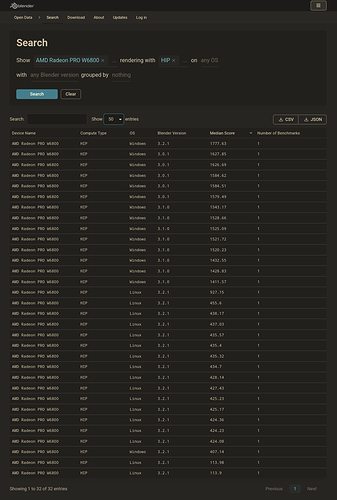Out of curiosity I checked how HIP on Linux looks on OpenData, and either OpenData have some issues, or Radeon PRO W6800 had massive performance regression between 3.1 and 3.2.
On the surface this looks like Windows-Linux thing, but there is one Windows benchmark from 3.2 with the same regression as Linux.
